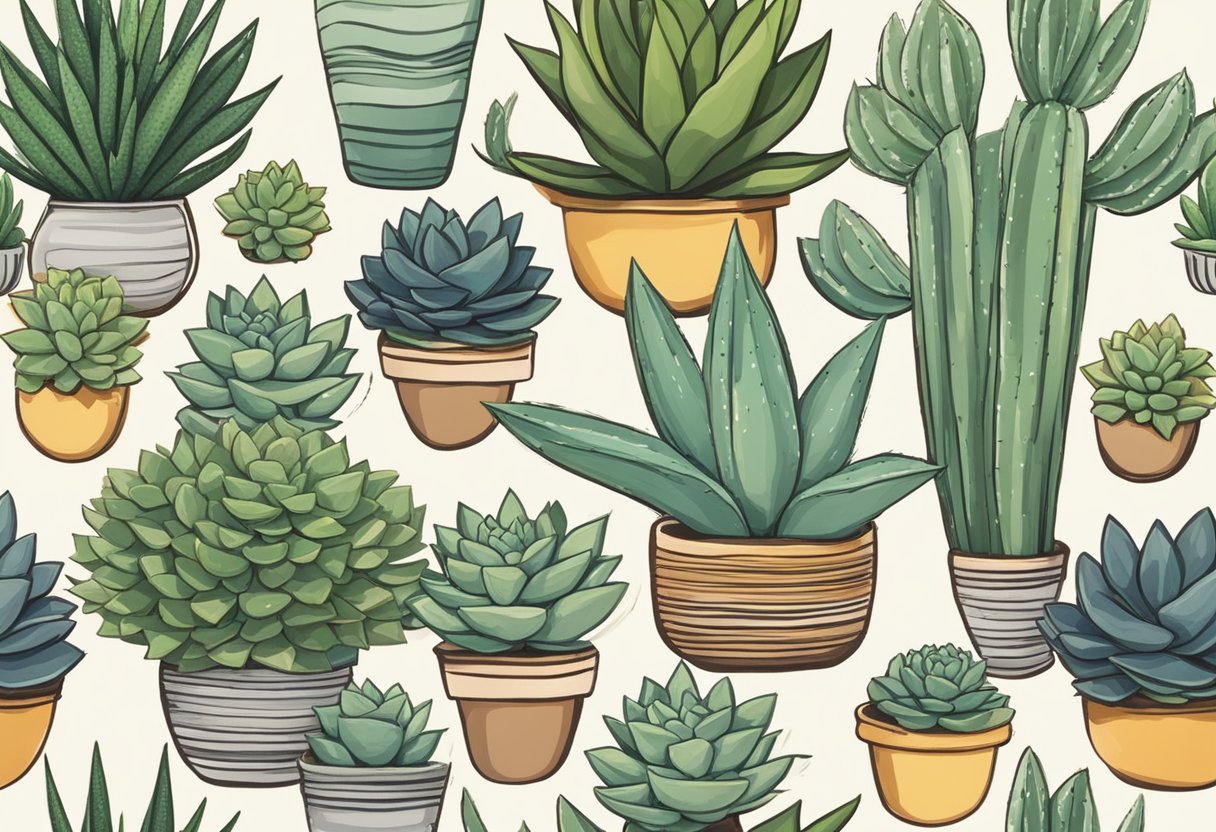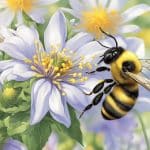Types Of Succulent Plants
Succulent plants are a popular choice for many gardeners, both experienced and novice. These plants are known for their unique and intriguing shapes and colors, as well as their low-maintenance care requirements. Succulents are also a versatile plant that can be used in a variety of settings, from indoor gardens to outdoor landscapes.
Understanding succulents is the first step to successfully growing and caring for them. Succulents are a type of plant that store water in their leaves, stems, and roots, allowing them to survive in arid climates. They come in a wide variety of shapes, sizes, and colors, making them a popular choice for gardeners looking to add some visual interest to their landscapes. Some popular varieties of succulents include aloe vera, jade plant, and echeveria.
When it comes to caring for succulent plants, there are a few key things to keep in mind. Succulents require well-draining soil, as they are susceptible to root rot if their roots sit in water for too long. They also prefer bright, indirect sunlight and do not require frequent watering. With the right care and attention, succulents can thrive and add beauty to any garden or indoor space.
Key Takeaways
- Succulent plants are a popular choice for gardeners due to their unique shapes and low-maintenance care requirements.
- Succulents store water in their leaves, stems, and roots, allowing them to survive in arid climates.
- Proper care for succulent plants includes well-draining soil, bright, indirect sunlight, and infrequent watering.
Understanding Succulents

Defining Characteristics
Succulent plants are a group of plants that have thick, fleshy leaves, stems, and/or roots that are capable of storing water. This adaptation allows them to survive in arid and semi-arid climates where water is scarce. The leaves of succulent plants are usually covered in a waxy or powdery substance that helps to prevent water loss through evaporation.
One of the defining characteristics of succulent plants is their ability to survive long periods of drought. This is because they have evolved to store water in their leaves, stems, and/or roots. They are also able to survive in extreme temperatures, both hot and cold, and in low-nutrient soils.
Succulent Classifications
Succulent plants are classified based on their genera and species. There are over 25 plant families that contain succulent species. Some of the most common families include Cactaceae, Crassulaceae, and Aloeaceae.
Cacti are a type of succulent that belong to the family Cactaceae. They are known for their spines, which are actually modified leaves that help to protect the plant from predators. Cacti are also able to survive in extreme temperatures and low-nutrient soils.
Aloe plants are another type of succulent that belong to the family Aloeaceae. They are known for their medicinal properties and are often used to treat burns, wounds, and other skin conditions. Aloe plants have thick, fleshy leaves that are capable of storing water.
Other common succulent genera include Echeveria, Sedum, and Crassula. Echeveria plants are known for their rosette-shaped leaves and come in a variety of colors. Sedum plants are often used as ground cover and have small, star-shaped flowers. Crassula plants are known for their fleshy leaves and are often used in bonsai.
In conclusion, succulent plants are a diverse group of plants that have evolved to survive in arid and semi-arid climates. They are able to store water in their leaves, stems, and/or roots, and are classified based on their genera and species. Some of the most common succulent families include Cactaceae, Crassulaceae, and Aloeaceae.
Popular Varieties of Succulents
Succulents are a popular choice for indoor and outdoor gardening due to their low maintenance requirements and unique appearance. Here are some popular varieties of succulents that are easy to care for and add a touch of greenery to any space.
Aloe Varieties
Aloe vera is one of the most well-known types of succulents, but there are many other varieties of aloe to choose from. Aloe aristata, also known as Lace Aloe, has distinctive white spots on its leaves and produces coral-colored flowers in the summer. Aloe polyphylla, or Spiral Aloe, has a unique spiral growth pattern and produces pink flowers in the summer. These aloe varieties are easy to care for and add a touch of interest to any succulent collection.
Echeveria and Rosettes
Echeveria is a popular genus of succulents that are known for their rosette-shaped leaves and colorful blooms. Echeveria elegans, or Mexican Snowball, has pale blue-green leaves that form a tight rosette and produces pink flowers in the summer. Echeveria agavoides, or Lipstick Echeveria, has pointed leaves that are a vibrant red color and produces orange flowers in the summer. These echeveria varieties are easy to care for and add a pop of color to any succulent garden.
Jade Plant and Crassula
Jade Plant, also known as Crassula ovata, is a popular succulent due to its easy care requirements and unique appearance. Its thick, round leaves and woody stems give it a tree-like appearance, and it produces small white or pink flowers in the winter. Crassula muscosa, or Watch Chain Plant, has small, green leaves that grow in a chain-like pattern and produces white or pink flowers in the summer. These jade plant and crassula varieties are easy to care for and make great additions to any succulent collection.
Sedum and Groundcovers
Sedum is a large genus of succulents that are known for their groundcover-like growth habit and colorful blooms. Sedum morganianum, or Burro’s Tail, has long, trailing stems covered in small, plump leaves and produces pink or red flowers in the summer. Sedum rubrotinctum, or Jelly Bean Plant, has small, round leaves that turn a reddish color in bright sunlight and produces yellow flowers in the summer. These sedum varieties are easy to care for and make great additions to rock gardens or as groundcovers in outdoor spaces.
Overall, succulents are a versatile and low-maintenance choice for any gardener. With so many types and varieties to choose from, there is a succulent for every taste and skill level.
Succulent Care and Maintenance
Succulent plants are known for their low maintenance and easy-to-care nature. However, they still require some attention and care to thrive. In this section, we will discuss the essential aspects of succulent care and maintenance.
Watering Requirements
Succulents are adapted to arid environments and can store water in their leaves, stems, and roots. Overwatering succulents can cause root rot and kill the plant. Therefore, it is essential to water succulents sparingly.
The watering frequency depends on the type of succulent, the pot size, and the environmental conditions. As a general rule, wait for the soil to dry out completely before watering again. In hot and dry weather, succulents may require more frequent watering.
Soil and Potting
Succulents prefer well-draining soil that allows water to flow through quickly. A mixture of potting soil, sand, and perlite is suitable for most succulents. Avoid using heavy soil that retains water for too long, as it can cause root rot.
When potting succulents, choose a container that allows excess water to drain out. Terra-cotta pots are ideal for succulents as they are porous and allow air to circulate around the roots.
Light and Temperature
Succulents require bright, indirect light to thrive. They can tolerate full sun, but direct sunlight can scorch the leaves and cause sunburn. If the succulent is not getting enough light, it may become leggy and stretch towards the light source.
Succulents prefer warm temperatures between 60°F to 80°F. They can tolerate cooler temperatures but may become dormant in winter. Avoid exposing succulents to freezing temperatures as it can damage the plant.
In summary, succulents are low maintenance plants that require minimal care and attention. By following the watering, soil, and light requirements, you can keep your succulents healthy and thriving.
Designing with Succulents
Succulents are versatile and low-maintenance plants that can be used in a variety of indoor and outdoor design settings. They come in a wide range of colors, shapes, and sizes, making them perfect for adding visual interest to any space. When it comes to designing with succulents, there are two main categories to consider: indoor arrangements and outdoor landscaping.
Indoor Arrangements
Succulents are a great choice for indoor arrangements because they are easy to care for and can thrive in a range of lighting conditions. They can be planted in pots, hanging baskets, or even in wall-mounted planters to add a touch of greenery to any room. Some popular indoor succulent varieties include:
- Echeveria: These rosette-shaped succulents come in a variety of colors and can be planted alone or in groups for a stunning display.
- Haworthia: These small, low-growing succulents are perfect for adding texture to an arrangement.
- String of Pearls: This trailing succulent looks great in a hanging basket or wall planter and adds a unique touch to any space.
When designing indoor succulent arrangements, it’s important to consider their lighting needs. Most succulents prefer bright, indirect light, but some can tolerate lower light conditions. It’s also important to choose a well-draining soil and to allow the soil to dry out between waterings to prevent root rot.
Outdoor Landscaping
Succulents are a popular choice for outdoor landscaping because they are drought-tolerant and low-maintenance. They can be planted in rock gardens, as ground covers, or in raised beds to create a stunning desert-inspired landscape. Some popular outdoor succulent varieties include:
- Agave: These large, sculptural succulents come in a range of sizes and colors and can be planted alone or in groups for a dramatic effect.
- Sedum: These low-growing succulents are perfect for ground covers and come in a range of colors and textures.
- Aloe: These succulents have striking foliage and can be planted in groups to create a bold statement.
When designing with outdoor succulents, it’s important to consider their hardiness zone and to choose varieties that are appropriate for the local climate. Most succulents prefer well-draining soil and can tolerate full sun, but some varieties may prefer partial shade. It’s also important to allow the soil to dry out between waterings to prevent root rot.
In summary, succulents are a versatile and low-maintenance plant that can be used in a variety of indoor and outdoor design settings. By choosing the right varieties and paying attention to their lighting and watering needs, succulents can add a touch of greenery to any space.
Challenges and Solutions
Succulent plants are known for their hardiness and low maintenance requirements. However, they can still face challenges that can affect their health and growth. Here are some common challenges and solutions to help keep your succulents thriving.
Pest Management
Succulents are susceptible to infestations by common pests such as mealybugs, aphids, and scales. These pests can cause damage to the leaves and stems of the plant, leading to stunted growth and even death.
To manage pest infestations, it is important to identify the type of pest and use an appropriate control method. Horticultural oil or neem oil can be used as a natural pest control method. Alternatively, pests can be removed manually using a cotton swab dipped in rubbing alcohol.
Diseases and Rot
Succulents can also be affected by diseases and rot, which can be caused by overwatering or poor drainage. Root rot is a common problem in succulent cultivation and can be prevented by using well-draining soil.
If a succulent is affected by rot, it is important to remove the affected parts of the plant and allow it to dry out before replanting in fresh soil. Fungal infections can be treated with a fungicide, but prevention is key to keeping your succulent healthy.
Propagation Techniques
Propagation is a popular way to grow more succulent plants. However, it can be challenging to get new plants to root and grow successfully.
One common propagation technique is to take cuttings from the parent plant and allow them to callus over before planting in well-draining soil. It is important to keep the soil moist but not waterlogged during the rooting process.
Another technique is to propagate succulents from leaves. Simply remove a healthy leaf from the parent plant and place it on top of well-draining soil. Keep the soil moist and wait for new roots and a new plant to grow from the leaf.
By managing pests, preventing diseases and rot, and using effective propagation techniques, succulent plants can thrive and grow into beautiful, healthy specimens.
Advanced Topics in Succulents
Rare and Unusual Species
Succulent plants are known for their unique and exotic appearance, and some species are particularly rare and unusual. These rare succulents can be difficult to find, and they are often highly sought after by collectors and enthusiasts.
One example of a rare succulent is the Lithops, also known as “living stones”. These succulents are native to southern Africa and are known for their unique appearance, which resembles small rocks or pebbles. Another rare succulent is the Titanopsis, which is native to South Africa and is known for its unusual rosette-shaped leaves.
Hybridization and Cultivation
Hybridization is a common practice in the cultivation of succulent plants. This process involves crossbreeding two different species of succulents to create a new hybrid plant with unique characteristics. Hybridization can result in plants that are more resistant to disease, more colorful, or more resilient in extreme weather conditions.
Cultivation of succulent plants is also an important aspect of the hobby. Many enthusiasts enjoy growing and caring for their succulent plants, and there are many different techniques and methods that can be used to cultivate healthy and vibrant plants. Some popular cultivation techniques include using specialized soil mixes, controlling watering and light exposure, and using fertilizers and other supplements to promote growth.
In conclusion, rare and unusual species as well as hybridization and cultivation are advanced topics in the world of succulent plants. These topics can provide an exciting and rewarding challenge for enthusiasts who are looking to expand their knowledge and take their hobby to the next level.






